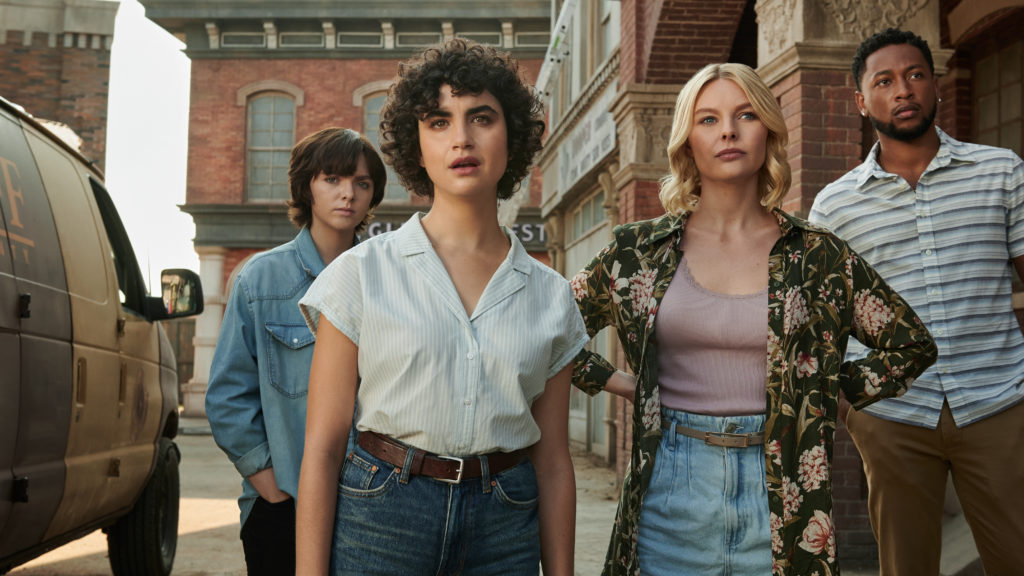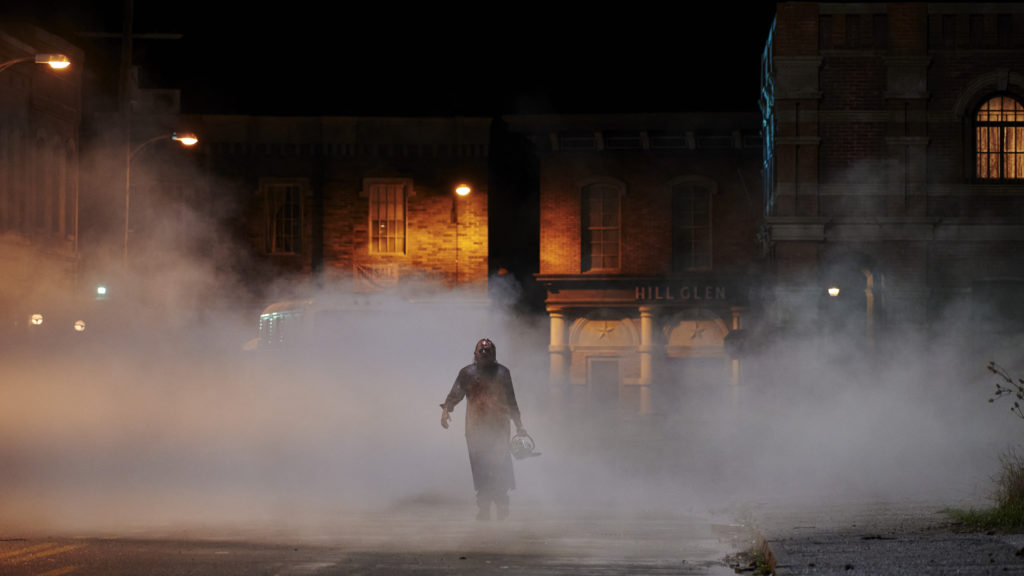Texas Chainsaw Massacre is a film I feel like was only rumored to exist for the longest time. It got a lot of heat when rumors broke that it was testing very poorly, and the original directors got hacked from the project. It was radio silent after that. Film Twitter was beginning to get unsettled by how quiet it became. Netflix acquired the rights to the movie and seemed to have put a stake in the heart. The amount of misguided speculation it brought was the death of any real hope it may have had, or so it seemed. It went radio silent, again, and it turns out embargos weren’t lifted until the morning of its release. That never looks good, especially for a film already under scrutiny since its development.
At first, I was a little apprehensive seeing all the adversary reactions leak online shortly after its release on Netflix. A part of me wonders if that was because those watching it already had a bias formed with the amount of negative press surrounding it before its release. Regardless, my expectations weren’t high. I remember watching the trailer and thinking, “Huh, this looks entertaining to a degree.” And that was good enough for me to look forward to finally being able to watch the much-rumored reboot, sequel, requel—whatever you want to call it. And you know what? I enjoyed it more than I thought I would.

The film takes place 50 years after the events in The Texas Chainsaw Massacre (1974). A profusion of young adults (I want to call them kids because their behavior was atrocious) travel to a thought-to-be ghost town of Harlow in Texas. They plan to gentrify the area and make it something new and upcoming. While there, they learn of the horrendous massacre that happened decades ago and have a run-in with two members of a family that longtime fans of the TCM franchise will recognize. The kiddos argue that they own all the places in the not-so-abandoned town. Such entitlement leads to an event that has the sheriffs taking the family to the hospital due to health concerns. When one of them passes away, all hell breaks loose, and Texas Chainsaw Massacre becomes a bloody revenge story.
Look, the plot of the movie is ridiculous. But all-in-all, it still fits the horror formula and gives David Blue Garcia plenty of wiggle room to let Leatherface do what he does best: slash, hack, and splice his way through those who threaten to take everything away just because they think they can. And this Leatherface is ghastlier than he is in any of the other sequels of the franchise. He hides in the shadows, sets diversions, and runs rather quickly for being a guy nearing his 70s. And you know what? If an older man came running toward me with a motorized chain with blades while wearing the face of somebody else, you damn well better believe I would be screaming bloody murder.

I’m not going to lie, though; thematically, Texas Chainsaw Massacre sucks ass. There’s no getting around that fact. The core issue of the film, aside from the ludicrous plot, is how thematically forced it feels. Sure, some of the commentaries fall under how the younger generation has privilege, technology, and claims to care about the environment while also destroying it by gentrifying areas that are still functional. And at points, it feels like the filmmakers are out of touch about these social issues and only placed them there because of relevancy. For example, having one of the kids be a survivor of a school shooting, all while still having her try and fight her way through another massacre in the making, isn’t problematic at all. Right? Of course, it is. It’s a mixed bag of commentary that feels out of place and random. And maybe it wouldn’t feel random had they taken their time to expand on these ideas, but if they do that, they risk the beneficial short runtime they have.
With that being said, the characters are truly despicable. It’s hard to connect with any of them. So, when Leatherface starts picking them off either one-by-one or all at once (one scene, in particular, comes to mind for this), it showcases how very little care the filmmakers have for them. This begs the question: why include all the complicated themes if the characters are going to be cast aside?
Regardless of all those issues, they weren’t things that held the film from being at least entertaining for me. Will they for others? Most certainly, and that’s more than okay. The things that stood out to me the most are along the lines of the cinematography being pretty damn good, the action is relentless, and the score is on par with the tone of the film. And above all, the runtime is relatively short. The story feels straightforward and to the point (for the most part).

The second act could have used some trimming here and there. That’s where many of my issues come into play. That’s where they try to explore these (not so) big ideas, but they butcher any potential the characters may have had while in the process. The first and third acts are the best and work in the movie’s favor. And the last five minutes genuinely shocked me. The ending may be abrupt for some, but a part of me admires how quickly it ends. It’s very much in the same line as finishing a book and slamming it shut satisfyingly. It doesn’t allow the audience enough time to argue if it’s a good or bad approach. Like, as a filmmaker, you have to admire that audacity. And I’d argue (after the credits roll) that it works.
Overall, Texas Chainsaw Massacre likely will not win over any new fans, but it’ll keep those looking for a bloodbath horror flick entertained. As stated earlier, I liked it more than I anticipated. A part of that could be the Halloween approach of retconning all other entries; it feels a little fresher. But in the end, I think it’s not something we necessarily need. Texas Chainsaw Massacre is not the entry that should be the attempt at rebooting the franchise; however, that’s not to say it’s not a step in the right direction. It has more going for it than not if you can look past its obvious flaws.



